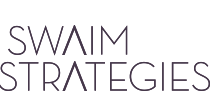A Legacy Event for Your Major Donors
Unlike an acquisition event where you’re inviting new donors into your work, or a major donor event designed to meet the needs of your entire donor base, a legacy event is for your most invested major donors. It’s an event designed to build relationships, increase major donor support, and cultivate long-term investments.
Legacy Event 101
- A legacy event is a capstone to a small campaign. It doesn’t have any ticket price or day-of-event fundraising. Instead, it’s a thank-you event designed to celebrate a donor’s commitment and to help you build and cultivate relationships.
- Legacy events are exclusive, and access comes only through giving as part of a short campaign challenge or as a part of your top-tier donor circles.
- Legacy events welcome people into an exclusive club of supporters. The intention is to use the event to foster ongoing and future contributions, build deep relationships and make connections. People give to people.
- Legacy events are low in cost and big in return. The return you receive is not only their campaign gift, but also their long-time investment in you, your work and your relationship.
The Strategic Ask
The planning of a legacy event starts with your strategic ask. What is the campaign or challenge that you’re trying to secure?
The ask is not to attend or buy a table, but is instead a select series of key asks to major donors and corporate supporters with the opportunity to match a major donor in their giving or to join a donor circle.
As a result of participating in the campaign, donors will receive an invite to an exclusive evening with your organization. Establish tiers of giving to the campaign. Ask people to give at the size that is meaningful to them. Regardless of their gift size or what circle they choose to join, this exclusive evening will invite campaign donors to attend with a guest. Each gift will yield two seats.
The Event
This is an opportunity to see your guests, thank them, know them and return the investment. The guest should feel that they are a part of your organization and that their support allows you to complete your mission. The most important element of this event is simply people connecting to people.
Each staff member should be assigned to host 2-4 guests. The intimate nature of this event is designed to really connect people. This is done through intentional experiences and relationship-driven programming.
The legacy event is unique and exclusive. It features the opportunity to really understand the story of your mission. It should feel special and guests should feel seen. Design your event as a unique high-touch donor experience that is customized to your mission and your audience. Perhaps this is an opportunity to bring donors into your organization for the first time.
Ultimately, the goal of a legacy event should be to cultivate your donors with a specific, unifying solicitation goal that maximizes your staff time and puts your relationships front and center.
Board Role
Attendance
At the event, your board should understand that they play the role of host as representatives of your work. There are three motivating factors for why people give:
- They want to be a part of something
- They want to be recognized
- They want to make a difference
Assign the board the role of making sure all three of these things happen. They should work the room and connect to people, welcome big donors by name and thank them for their giving. They should focus on introducing guests to each other. Additionally, they should look for opportunities to tell people the story of why they are involved with the organization and connecting people to the work of the organization.
During the program, they should lead by example. The program is a time to focus. The auction is a time to bid and applaud those who are bidding. The appeal is a time to listen to the storyteller and show support by giving. The program should not be a time when they are socializing or moving through the room to thank donors. They should appreciate guests after the program is over.
Emcee Role
General
Your event is likely a series of speakers from the stage. You should utilize an emcee to be the container for your event. Think about awards shows, there’s an emcee that is the audience’s touchpoint between shifts on stage, to explain what’s happening, set up the next speaker and keep things on time and moving. Your audience builds a rapport with your emcee throughout the event and comes to rely on this person to tell them what to expect next. It grounds them and keeps them on the train with you.
If those are the functions of the emcee, it’s important that those get communicated to your emcee. When recruiting for this role, make sure you explain what they will be doing and make sure they are comfortable in that role. They should be good speakers with an ability to engage an audience. They wrangle folks back if their attention is diverted, they keep things moving so they don’t lag and make sure the other speakers who take the stage get to the mic and the script. You should write a complete script written to the word for your emcee and they should be prepared to follow it.
Choosing a Good Emcee
Again, this isn’t a role for someone who is shy or afraid to be on a microphone in front of a big room. Your emcee should be comfortable on stage and on a mic. It’s fine that they aren’t a ‘professional’ speaker, but they should have a confidence and relatability that will bring your audience in, help them focus and connect to your work.
Onstage, they are an extension of your organization and should be able to connect with the audience as such. Finding someone connected to your organization and has a story to tell about their commitment to your programs gives them an authenticity that people respond to. Someone, like a news personality, might be great on stage, but if they’re not connected to the work in any way you’re missing an opportunity to continue to tell a bigger part of your story.
Your emcee should be collaborative. You should feel empowered to frame the story of your event and control what happens from the stage. Your emcee should be moving into the script you put together for them, not telling you what they’re going to do and hoping that works. They should be willing to execute your script and be in communication in a timely fashion so that you can keep your program development moving forward.
Scripting
Your organization, or event strategist, should craft the script for your emcee as a part of writing the entire script. Ideally, everything spoken from the stage is written in advance and as one whole script where all the pieces are fit together to create one arc for your program.
Before scripting, have a conversation with your emcee to get a feel for their personality and speaking style as well as their personal story of connection to the work you do. Also, let them know that they will be sent the script in advance, but that they aren’t responsible for scripting themselves or adding to the script in ways you don’t know about in advance. Let them know there will be a script printed in a larger font at the podium for them to utilize. Ask them if they have any special needs on stage or accommodations that need to be made.
When writing the script for your emcee, it’s important to connect your emcee and their introduction to your larger organization messages so it’s clear to your audience why they are onstage representing you. The emcee is your thread from moment to moment, so be sure to script enough material in-between speakers to frame who is coming to the stage next and why. They are the direction for your audience, so if they’re introducing a video, make sure they tell the audience to turn their attention to the screens. If they’re introducing an award recipient, make sure it is indicated to them in the script if they are to hand that person an award or take a picture with them.
Also, correct pronunciation of names is really important for your emcee, otherwise it looks like your organization doesn’t know how to say key names. So include phonetic spellings in the script of key names and organizations, and review them with your emcee before the event so they can make helpful notes for themselves.
Communications
Be in contact with your emcee with program changes so they feel like they’re a part of the process and not surprised when they get to your event. Send them a copy of the script in advance and be available for questions and feedback when they review it. Don’t send them the script and tell them to edit it as they like, you should be in control of the script strategy.
Set an agreed upon time for them to arrive at your event, ideally before all guests so that they can do a sound check at the venue and feel comfortable on the stage. Be available to them during this process to answer questions and offer support. Show them where they will be when not on the stage and have water set for them. After the program, make sure to give them a big thank you and introduce them to key people at your organization if they haven’t met yet.
Preparing your Speakers
Speaking to an audience is one of the things everyone who is part of your program will be doing during an event. One of the best ways to coach and support speakers is to communicate timelines and expectations consistently and thoughtfully and to make sure to follow through with any specific requests.
When inviting people to speak at your event, be sure to communicate the following:
- The date of the event
- The timeline, including an early start for sound check
- The fact that your event will include a script designed for the spoken word and written to the sentence level
- That your speaker will have access to speaker support and coaching through Swaim Strategies
When supporting and coaching speakers, we often like to have a one-on-one conversation in advance of scripting. This is an opportunity to talk through the larger messaging points of the event and ask each speaker questions about their relationship with your organization, why your work matters to them and to get their authentic thoughts about the specific messages that will be shared at the event. Following this conversation, Swaim Strategies will produce a first draft of the script, which will go through a client review and then be shared as a draft with each speaker to give them an opportunity to weigh in and adjust.
Speakers who would benefit from it can be offered a 30-minute coaching session with Swaim Strategies, which is an opportunity to share general best practices for delivering the script. These same best practices are also shared in a condensed way during the sound check on the day of the event.
In advance of the event, please be sure to give your speakers an opportunity to review the script and communicate any necessary changes prior to the final script being produced. It’s good to remind speakers that the scripting process is intentional and that you and your team will be spending a lot of time making sure that the messages shared from stage are vetted through all stakeholders. For this reason, it’s important and helpful to set the expectation that your speakers deliver the script as written at the event. Please also remind speakers at this time that a podium script will be produced for the event, so there is no need for them to bring a hard copy of their remarks with them to the event.
Supporting speakers at the event itself includes providing a sound check, making sure they are familiar with their portions of the script in the podium script, reminding them of where their section falls in the program and, on most event sites, providing a stage manager who will help cue them when it is their turn to speak. During and after the event, please be sure to express your thanks and appreciation for your speakers and for their help and commitment to making your program strong and impactful.
When speakers are given thoughtful and collaborative tools and coaching around these best practices, programs tend to be not only more successful but also to stick more closely to the script.
Learn about other types of events and how they can support your fundraising campaigns:
“An Engagement Event that Connects”
“Mission Focus Your Major Donor Event”






